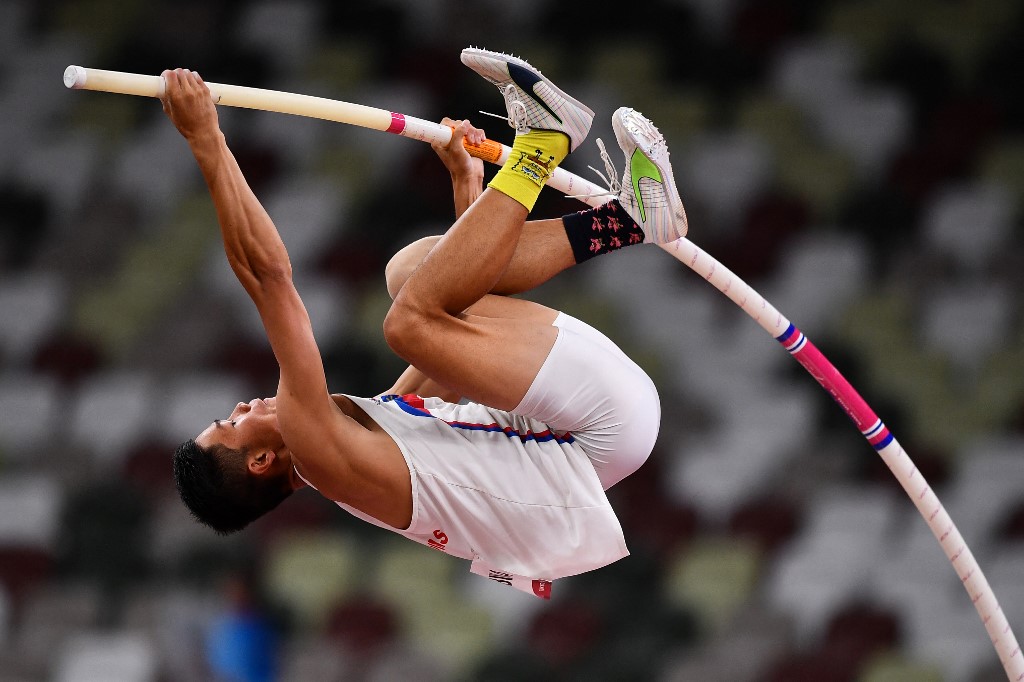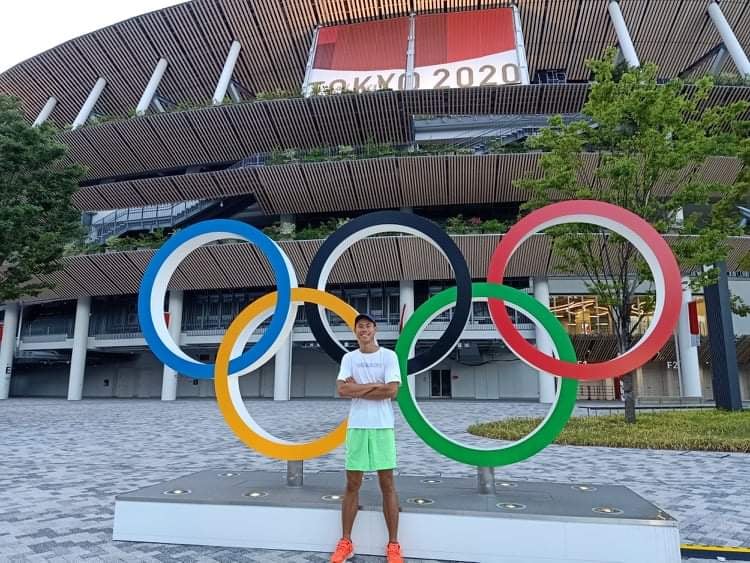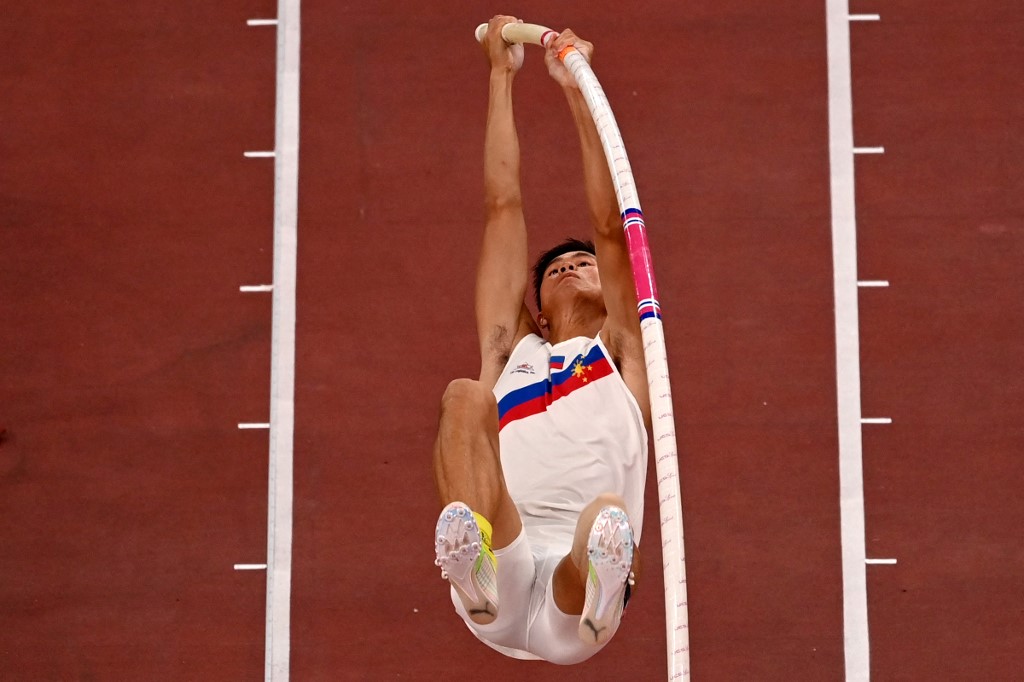How an ACL injury in 2017 prompted EJ Obiena to set his sights on the Tokyo Olympics
EJ Obiena almost lost his chance to become an Olympic athlete.
In August 2017, on the eve of his departure for the Southeast Asian Games in Kuala Lumpur, during his practice jumps EJ figured in a freak accident. He completely tore his right anterior cruciate ligament from a botched landing.
An ACL injury is one of the most dreaded by athletes across all sports. To many, it is a career ender. EJ was devastated. The specter of turning his back forever from the sport he grew up with and learned to love was just so palpable.
For EJ, that bad fall felt like falling into a bottomless abyss. The vortex of self-pity was pulling him in. But somewhere in the pitch-dark tunnel, a sliver of light flickered.
“If I just let myself accept this fate and not even attempt to chase something bigger, greater, then I stand to regret it big time when I am older and look back on the missed opportunity because I caved in,” EJ said.

From that moment on, he religiously followed medical advice after undergoing surgery on his knee. He patiently followed the routine of rehabilitation and fundamental strengthening. That signaled the beginning of his Olympic quest.
Chasing the dream—and school
As has been retold, Ernest John’s parents are both former athletes. EJ’s father and coach, Emerson Obiena, was a silver medalist in the 1995 SEA Games in the athletics discipline and a medal contender at the Tokyo Olympiad.
Although EJ has been gripping vaulting poles since he was 12 years old, it was not until 2017 that he began to set his sights on becoming an Olympian. Prior to deciding to chase the elusive Olympic dream, EJ was content in winning at national tournaments and regional competitions.

In the course of his rehabilitation from surgery in 2017, EJ went back to school. As he had to comply with all the requirements of his course like other students, going to his classes proved to be a physical challenge.
His operated leg was in a cast. His mom or dad had to drive him to school, but the most difficult part was transferring from one class to another throughout the semester.
One time, one of his professors declined his request to have a special exam because it coincided with the date of his follow-up operation. Unable to convince his teacher, immediately following his minor surgery and still groggy from anesthesia, he rushed to school to take the test.
Upon reaching the examination room, his teacher recognized he was visibly dazed. He was told he could take the test on another day, when he felt much better.
Instead of being irked, EJ took it in stride, the same way he reacts when a competition gets cancelled due to inclement weather.
“I wanted to continue my studies so I persisted. Nobody said it was easy,” EJ quipped.

After that semester he filed for an indefinite leave of absence from his school. He needed the time to build up for Tokyo 2020. For EJ, his Olympic dream was a bus in a hurry leave while school was an anchor he could go back to after achieving his athletic goal.
He went back to Italy to resume his training with fabled Ukranian coach Vitaly Petrov. In the course of expanding his athletic cred in pole vaulting, he was entered in several competitions and invitationals in nearby areas around Europe.
Carrying his poles to the airport
Slowly his wins started to accumulate on his scorecard. In one of the athletics meets in Germany he got invited to, the organizer booked him in some nondescript hotel. On the day of winning the competition he had to fly back to Italy.
The hotel staff was not briefed on the precise details by the competition organizer. He was dropped off in the wrong airport terminal. He had to walk to the correct terminal, which was about 1.5km away, with his 25kg vaulting poles on his shoulders while hauling his two suitcases weighing 35kg.
Upon reaching the correct terminal—or so he thought—he was told by the airline staff that his poles would not be accepted. After some frantic calls to the competition organizer, he was directed to proceed back to the same terminal where he got off, still lugging a total of 60kg.
Despite being exasperated and exhausted at the same time, he opted to laugh off the bizarre situation he was thrown into.
Armed with fortitude, EJ consistently notched up the world rankings. On Sept. 3, 2019, EJ lorded the pole vaulting meet at Piazza Chiari in Italy with a jump of 5.81m. His performance was enough to get him a berth at the Tokyo Olympics (the Olympic qualifying standard is 5.80m). All of a sudden, EJ was the first Filipino athlete to qualify for the 2020 Tokyo Olympics.

Then COVID happened. EJ admitted he felt dejected. “I felt that I was already gaining momentum in time for the Olympics. But the pandemic sort of halted my peaking process.”
He convinced himself that he was not the only athlete affected by the pandemic. With the guidance of his coach and his team, he went back to the drawing board to remap his road towards the new date of the Tokyo Olympics.
On July 31, at the preliminary round of the pole vault competition, he cleared 5.75m on his third and last attempt.
On Wednesday, Aug. 4, in the pole vault finals, he tallied 5.70m, again, on the third attempt. He was unable to advance to the next height of 5.80m.
EJ concluded his campaign, 11th among 14 finalists, and hopefully he will continue his Olympic dream.


